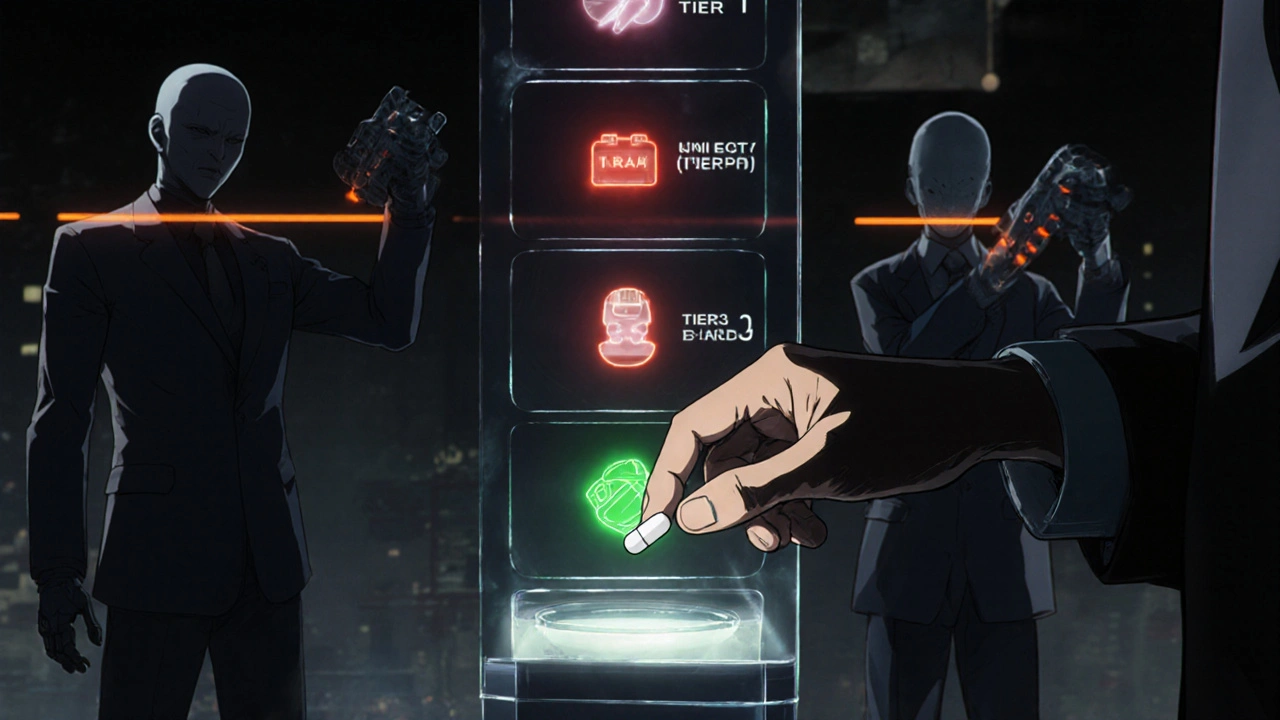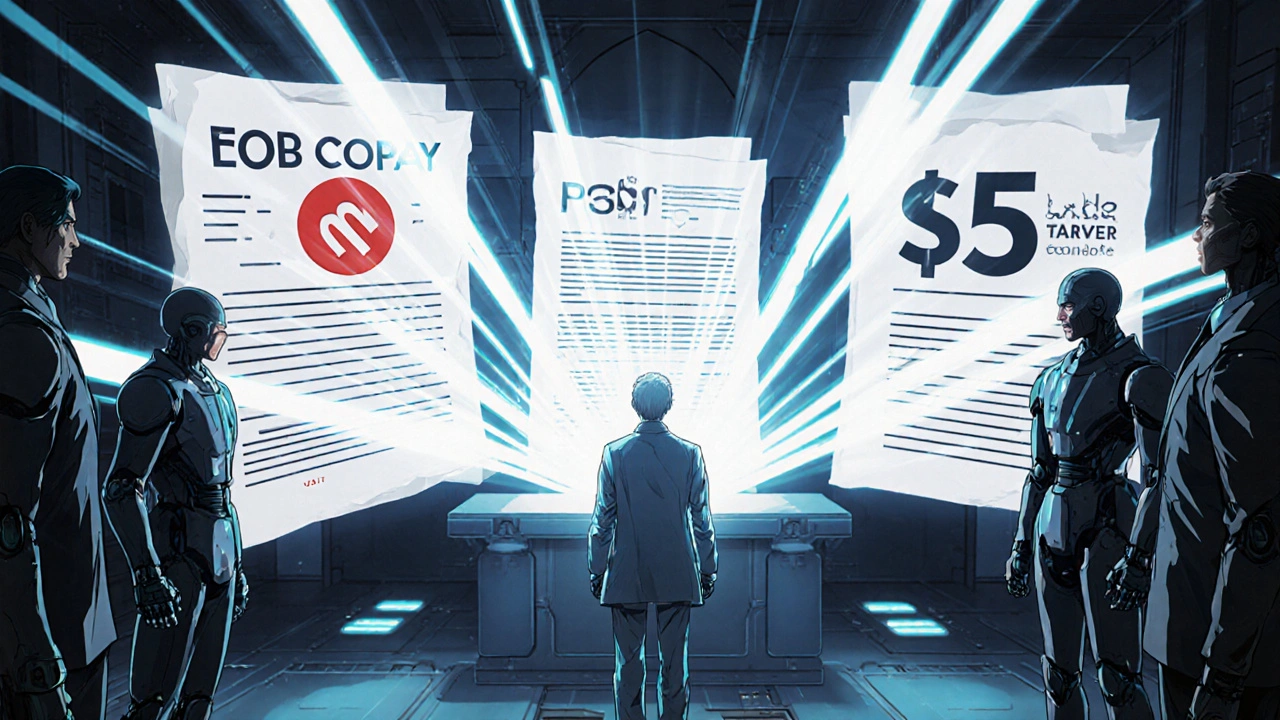When you fill a prescription for high blood pressure or cholesterol, you might not think about why your copay is $5 instead of $50. But behind that simple number is a complex system designed by your health plan to save money-mostly by pushing you toward generic drugs. These aren’t second-rate medicines. They’re exact copies of brand-name drugs, approved by the FDA, and they cost 80-85% less. Health insurers and pharmacy benefit managers (PBMs) have spent decades building benefit designs that make generics the default choice. And it’s working-91.5% of all prescriptions filled in the U.S. in 2022 were generics, even though they made up just 22% of total drug spending.
How Insurance Plans Push You Toward Generics
Most health plans don’t just encourage generics-they engineer their benefits to make them the only smart choice. The main tool? Tiered formularies. Think of it like a pricing ladder. At the bottom is Tier 1: generics. You might pay $0 to $10 for a 30-day supply. Tier 2 is preferred brand-name drugs-maybe $25 to $50. Tier 3? Non-preferred brands, often $60 or more. If your plan doesn’t cover your brand-name drug at all unless you’ve tried the generic first, that’s called step therapy. And it’s used in 92% of Medicare Part D plans. Some plans go even further. Closed formularies block brand-name drugs entirely if a generic exists. One Medicare HMO study found this approach cut brand-name use by nearly 29%. And in 49 states, pharmacists can swap a brand for a generic without asking your doctor-thanks to mandatory substitution laws. You might not even know it happened.The Real Savings-And Who Gets Them
The numbers are staggering. Between 2013 and 2022, generic drugs saved the U.S. healthcare system over $3.7 trillion. That’s more than $370 billion a year. For patients, that means a $150 brand-name drug might cost just $25 as a generic. But here’s the catch: you’re not always seeing the full savings. Pharmacy benefit managers (PBMs)-the middlemen between insurers, pharmacies, and drugmakers-often use a practice called spread pricing. They tell your plan they’re paying $10 for a generic, but actually pay the pharmacy $7. You pay your $10 copay. The $3 difference? That’s profit for the PBM. A 2022 USC Schaeffer Center study found patients were overpaying by $10-$15 per prescription because of this. Even worse, some plans charge you a copay that’s higher than the actual cost of the drug. Then they take back the difference-called a copay clawback. You walk away thinking you paid $15 for a $5 drug. The plan pockets the rest.How Different Plans Compare
Not all health plans treat generics the same way. Medicare Part D, which covers over 50 million seniors, uses standardized tiers but varies widely by plan. In 2024, generic copays ranged from $0 to $15. Medicaid, which covers low-income Americans, actually has a higher generic dispensing rate-89.3%-than commercial insurance at 87.1%. That’s because Medicaid is tightly regulated. States can only reimburse pharmacies up to 250% of the average manufacturer price (AMP), forcing pharmacies to use generics to stay profitable. Self-insured employers-companies that pay for their own employees’ health care instead of buying insurance-are especially aggressive. A Johns Hopkins study found two large employers saved 9-15% on drug costs just by switching patients to cheaper, therapeutically equivalent generics. No drop in effectiveness. Just lower bills. Then there’s the new kid on the block: Mark Cuban Cost Plus Drug Company. Launched in 2022, it sells generics directly to consumers without insurance middlemen. A 2023 analysis found patients saved a median of $4.96 per prescription. But here’s the twist: Medicaid patients didn’t save a cent. Why? Because Medicaid already pays the lowest possible price. The savings were only for people paying out-of-pocket.
What Patients Really Experience
On Reddit, one user wrote: “Generic copay went from $5 to $0 last month-anyone else?” Over 87% of the 142 replies said yes, and they were thrilled. But another thread on Patients Like Me told a different story: “I paid $22 for a generic that I thought should’ve been $8.” That’s the copay clawback again. A Kaiser Family Foundation survey found 68% of Medicare beneficiaries were satisfied with their generic coverage. But 22% struggled to get their doctor to appeal when a brand-name drug was denied. And 14% had to go through multiple appeals. Then there’s the clinical side: 31% of doctors reported patients had side effects after being switched to a generic. Not because the drug was bad-but because some patients react differently to fillers or coatings, even if the active ingredient is identical.Who Controls the System-and Why It’s Broken
Three PBMs-CVS Caremark, OptumRx, and Express Scripts-handle 83% of all prescription claims. They build the formularies, negotiate rebates, and set copays. Their profits come from the gap between what they charge insurers and what they pay pharmacies. That’s why they don’t want transparency. In 2023, PBMs secured $195 billion in rebates and discounts for health plans. But most of that money never reached patients. The Department of Labor is finally pushing back. Starting January 1, 2025, all Explanation of Benefits (EOB) statements must show exactly how much the drug cost, how much the PBM paid, and how much you paid. No more hiding. If your copay is $15 and the drug cost $8, you’ll see it.
The Future: More Rules, More Transparency
The Inflation Reduction Act, which took full effect in 2025, capped out-of-pocket drug costs for Medicare Part D at $2,000 a year. That’s huge. It means seniors will no longer ration pills to save money. But it also changes how insurers think about generics. If your costs are capped, the incentive to push cheaper drugs shrinks. Plans may start shifting focus to other cost controls. In 2026, CMS is launching the GENEROUS Model for Medicaid. It’s designed to negotiate lower generic prices directly with manufacturers and standardize coverage across states. Projections say it could save $40 billion over ten years. Meanwhile, the generic drug market itself is consolidating. Teva, Viatris, and Hikma control nearly 38% of the market. That reduces competition-which can drive prices back up. The USC Schaeffer Center warns: without more competition among generic makers, savings won’t last.What You Can Do
You don’t have to be a passive player in this system. Here’s how to take control:- Always ask: “Is there a generic version?” Even if your plan says yes, your doctor might not have checked.
- Check your EOB after January 2025. If your copay is higher than the drug’s actual cost, contact your plan.
- If you’re switched to a generic and feel worse, tell your doctor immediately. You have the right to appeal.
- Compare prices. Sometimes, paying cash at a pharmacy like Walmart or Costco is cheaper than using your insurance.
- Use tools like GoodRx or the Mark Cuban Cost Plus Drug Company to see what a drug really costs outside the insurance system.
Generics Work-But the System Needs Fixing
Generic drugs are one of the most successful cost-saving tools in modern healthcare. They’re safe, effective, and affordable. But the system designed to deliver those savings is broken. PBMs, insurers, and pharmacies all benefit-sometimes at your expense. The answer isn’t to stop using generics. It’s to demand transparency. To know what you’re really paying. And to push back when the math doesn’t add up.The goal isn’t just lower costs-it’s fair costs. And that starts with you asking questions.
